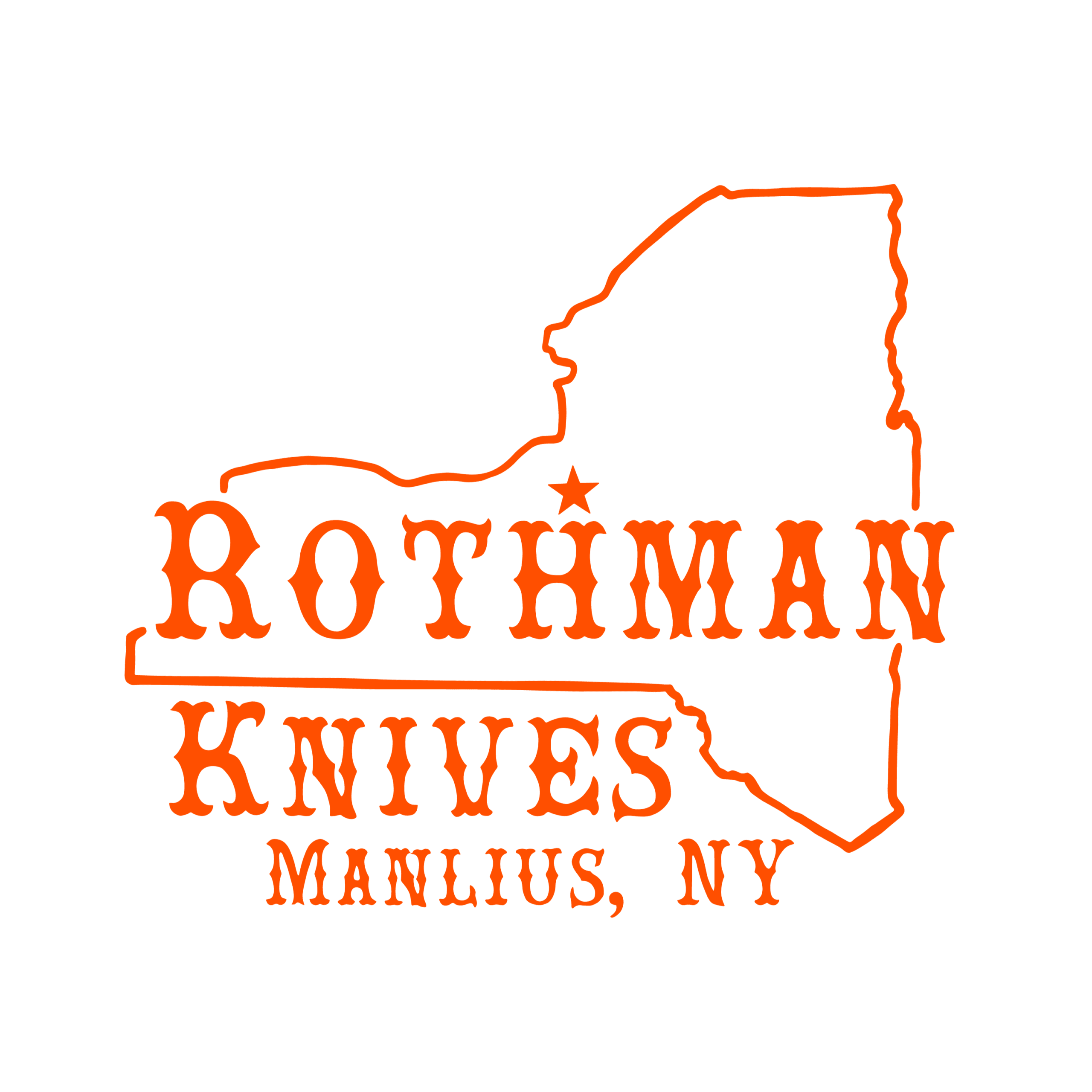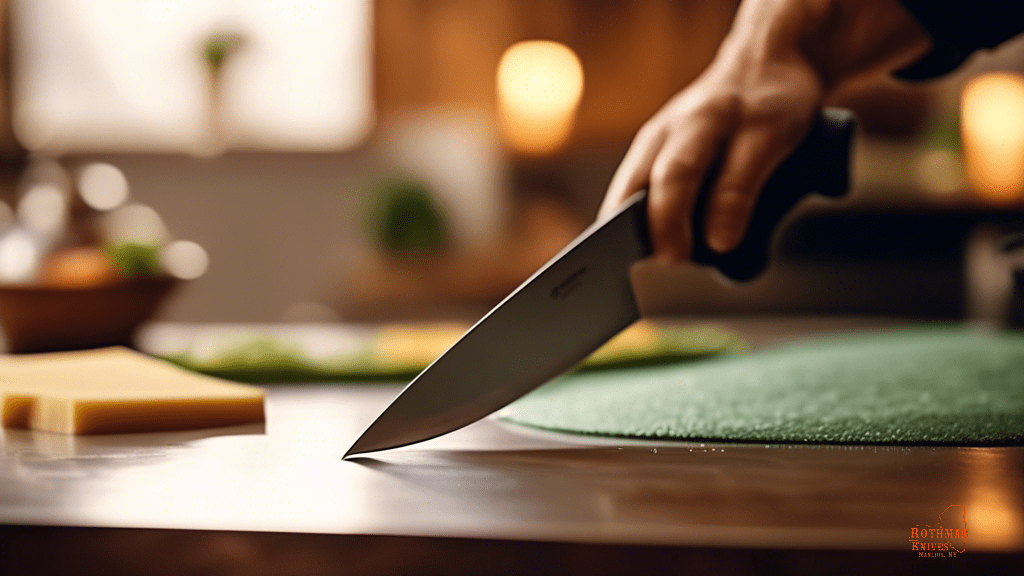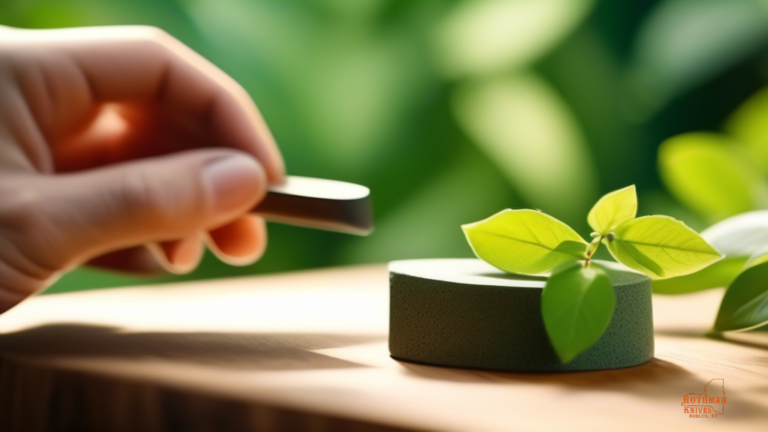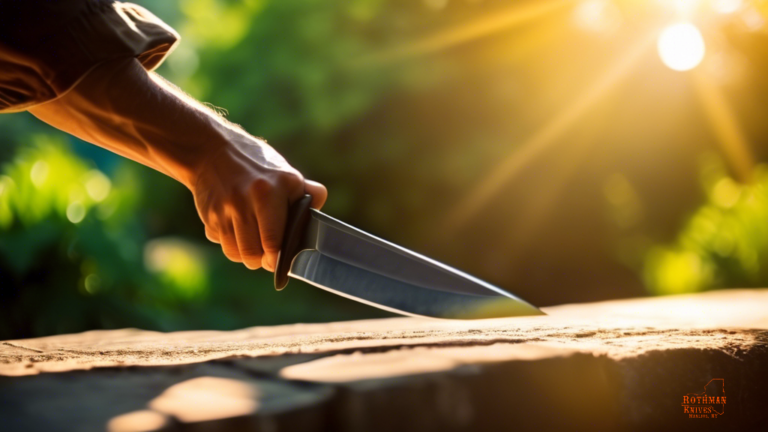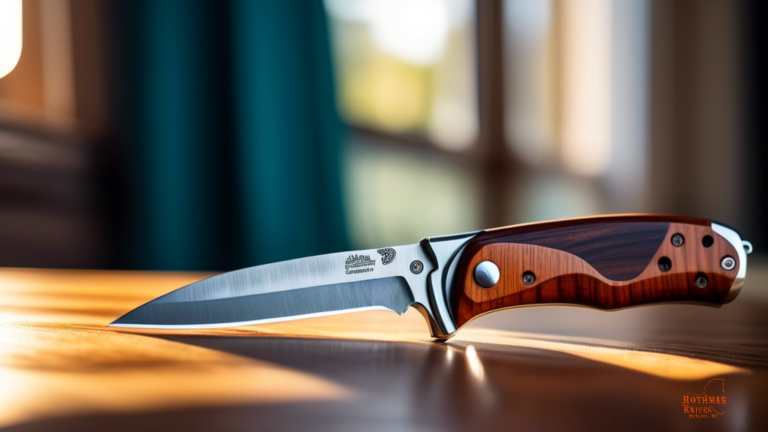Did you know that the angle at which you sharpen your tools can make a significant difference in their performance? Understanding different sharpening angles is crucial for achieving the perfect edge and maximizing the efficiency of your tools.
Whether you’re a woodworking enthusiast, a chef in need of razor-sharp knives, or simply someone who values a well-maintained tool collection, knowing the right sharpening angles can elevate your craft and make your work easier and more enjoyable.
In this article, we will explore the importance of sharpening angles and discuss common angles used for various tools. By understanding the factors that influence the choice of sharpening angle and learning how to achieve and maintain the perfect edge, you’ll be able to take your sharpening skills to the next level.
So, grab your tools and let’s delve into the world of sharpening angles together!
Key Takeaways
- Importance of sharpening angles for tool performance
- Achieving the perfect edge through the right sharpening angle
- Factors to consider when choosing a sharpening angle
- Tips for maintaining sharpness through regular honing and proper storage techniques
Importance of Sharpening Angles
Now that we know how different sharpening angles affect the performance of a blade, it’s crucial to understand the importance of selecting the right angle for optimal results.
The angle at which you sharpen your blade can significantly impact its cutting ability, durability, and overall performance.
Choosing the correct angle ensures that your blade remains sharp for longer periods and maintains its edge through various tasks.
When you sharpen your blade at the appropriate angle, you are maximizing its efficiency and effectiveness in cutting through different materials.
It’s like finding the perfect fit for a puzzle piece – when everything aligns just right, the end result is seamless and satisfying.
By understanding the importance of sharpening angles, you are not only enhancing the functionality of your blade but also becoming a part of a community that values precision, skill, and craftsmanship.
Common Sharpening Angles for Various Tools
To get the best edge on your tools, you gotta know the most common sharpening angles for various tools. Different tools require different angles to achieve that perfect edge. For example, a kitchen knife typically needs a sharpening angle of around 15 to 20 degrees, while a hunting knife might benefit from a slightly steeper angle of 25 to 30 degrees. Understanding these angles can make a world of difference in the performance and longevity of your tools.
Let’s break it down with a handy table to make it crystal clear. Check out the table below for some common sharpening angles for various tools:
| Tool | Sharpening Angle Range |
|---|---|
| Kitchen Knife | 15-20 degrees |
| Hunting Knife | 25-30 degrees |
| Chisel | 25-30 degrees |
| Axe | 25-30 degrees |
| Scissors | 30-40 degrees |
Knowing these common sharpening angles can elevate your tool sharpening game and ensure you’re getting the best out of your equipment. So, next time you’re sharpening your tools, keep these angles in mind for a sharper, more efficient edge.
Achieving the Perfect Edge
To achieve the perfect edge on your blade, you’ll need to consider the specific sharpening angle that works best for the task at hand.
Finding the right angle can make a significant difference in how sharp your blade becomes. It’s like finding the perfect recipe for a dish you love – each angle plays a crucial role in creating that razor-sharp edge that you desire.
Experimenting with different angles can be a fun journey of discovery, where you get to see firsthand how a slight adjustment can completely transform the sharpness of your blade. Don’t be afraid to try different angles and see what works best for you and your tools.
Remember, the perfect edge is within reach, and finding the right sharpening angle is the key to unlocking its full potential.
Factors to Consider when Choosing a Sharpening Angle
When choosing a sharpening angle, you should consider the impact it has on the durability of your blade. Did you know that using the wrong angle can increase the risk of chipping and dulling? Finding the right sharpening angle is crucial for maintaining the sharpness of your blade while also ensuring its longevity. Below is a table outlining some factors to consider when choosing a sharpening angle:
| Factor | Description | Importance |
|---|---|---|
| Blade Material | Different materials require different sharpening angles for optimal performance | High |
| Blade Usage | Consider how you will use the blade to determine the best angle for your needs | Medium |
| Skill Level | Your expertise in sharpening blades will impact the angle you can effectively use | High |
| Blade Thickness | Thicker blades may require a wider angle for better edge retention | Medium |
By taking these factors into account, you can select the sharpening angle that best suits your needs and ensures your blade performs at its peak. Remember, the right angle not only sharpens your blade effectively but also enhances its durability, giving you confidence in your cutting tasks.
Tips for Maintaining Sharpness
Maintaining the sharpness of your blade involves regular honing and proper storage techniques. To keep your blade sharp, make honing a part of your routine. A quick pass on a honing rod before each use will help maintain the edge.
Additionally, storing your knives properly is essential. Avoid tossing them in a drawer where they can bump against other utensils, causing dulling. Instead, consider using a knife block or magnetic strip to keep them safe and sharp.
Remember, a sharp blade is not only more efficient but also safer to use. When your knife is dull, you’re more likely to apply excessive force, increasing the risk of accidents.
By keeping your blade sharp through regular honing and proper storage, you not only maintain its effectiveness but also create a safer cooking environment for yourself and those around you.
So, make it a habit to care for your knives, and enjoy the benefits of precise cutting and effortless slicing in your kitchen.
Frequently Asked Questions
Can sharpening angles vary depending on the type of material being cut?
Depending on what you’re cutting, the sharpening angles can vary. For softer materials, a lower angle is better, while harder materials require a higher angle. Matching the angle to the material helps achieve optimal results.
How does the hardness of a blade affect the ideal sharpening angle?
When figuring out the ideal sharpening angle for a blade, consider the hardness of the material. Harder blades require a steeper angle for durability, while softer blades benefit from a shallower angle for optimal performance.
Are there any tools or techniques that can help beginners determine the correct sharpening angle?
To determine the correct sharpening angle as a beginner, consider using tools like angle guides or honing jigs. These handy devices can help you achieve the perfect angle for your blade, leading to a sharper edge.
Is there a recommended angle for sharpening serrated blades?
For sharpening serrated blades, a recommended angle is around 17-20 degrees. This angle helps maintain the blade’s shape and effectiveness. Remember, a sharp blade is not only safer but also more efficient in cutting.
How often should sharpening angles be adjusted for different tools or blades?
When sharpening different tools or blades, remember to adjust the angle as needed for optimal results. This may vary depending on the specific tool, so stay adaptable and experiment to find the best angle.
Last Updated: July 15, 2024
Verified and Approved by:

Mike Rothman
Founder of Rothman Knives
Like This Article?
Share with your friends
Table of Contents
Latest Articles
Keep Reading
-
Choosing The Right Knife Sharpening Stones
Learn how to choose the best knife sharpening stones for your kitchen knives and sharpen like a pro! Find out expert tips and tricks to keep your blades sharp and ready for any task. Click here to master the art of knife sharpening today!
-
Outdoor Knife Handle Maintenance: Essential Tips And Techniques
Learn how to properly maintain your outdoor knife handle with these essential tips and techniques. Keep your knife in top condition for all your adventures! Click now for expert advice on handle maintenance for outdoor knives.
-
Customized Folding Knives: Uniquely Crafted Multi-tool Pocket Knives
Looking for a stylish and functional multi-tool pocket knife? Explore our uniquely crafted Customized Folding Knives for the perfect blend of style and functionality. Upgrade your EDC with our premium collection today!
